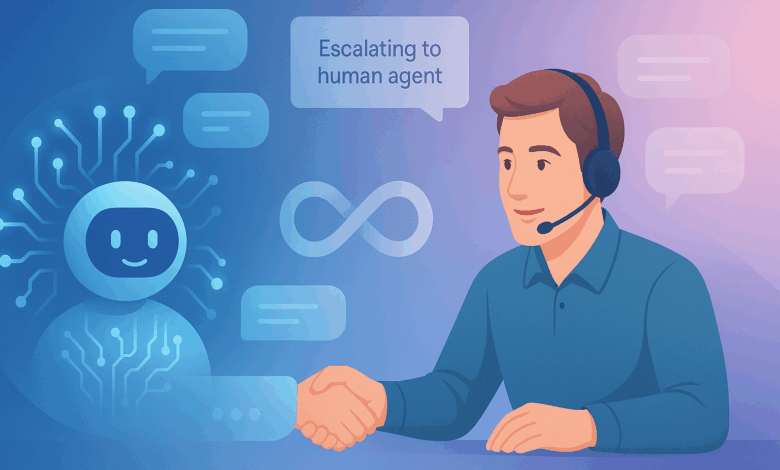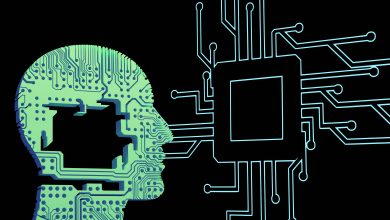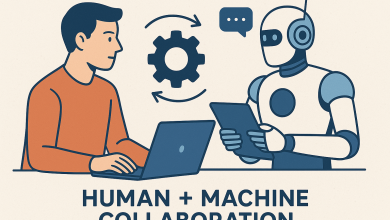
I recall an occasion that was not very long ago when I was at a dead end in a digital rut. I had attempted to reschedule a flight and I was left alone with a surprisingly happy chatbot. It worked well with easy questions, like, what is my booking number? But when my query went more complicated, like; a multi-city trip plus a family crisis that suddenly arose, the bot started to fall apart. It repeated itself again, I am sorry, I do not understand. The frustration was immense. That is compared to the other experience where a chatbot of another company, having not resolved my problem, immediately connected me to a human agent who informed me. I have noticed that you have been trying to solve X. Let us clear this out of your way. The relief was palpable.
This polarization is the major dilemma of contemporary business. Best practices of automation and efficiency have placed artificial intelligence solutions for business as an irresistible power. Nevertheless, the necessity of human beings to empathize and to understand one another, particularly in times of agony, is still strong. Whether we should or not use AI is no longer a question, but how we can integrate its force with the human touch that cannot be substituted and will produce an outstanding AI-enabled customer experience. Such a balance is not merely a technological issue, but it is one of the foundations of the modern digital transformation approaches.
The Emerging AI: Why Automation is Changing Customer Service
The change to AI in customer service is not merely a trend, but it is a paradigm shift in the way business is conducted. The main reasons are obvious: unmatched efficiency, 24/7 accessibility, and enormous scalability. Thousands of customer requests can be covered by a single AI system, which would take the small army of human agents. The driving force of this evolution is amazing progress in natural language processing (NLP) and machine learning, which enable AI to process human language and respond to it with greater accuracy.
The technological jump is also one of the primary aims of AI-based software development that should produce an enterprise-level software solution that is not only smart but also well-integrated into the working process of a company. When examining the positive impacts of machine learning in digital transformation, we realize that automation does not mean getting rid of human beings but enhancing their ability and letting them concentrate on what they are most effective in.
The Chatbots Case Study: Unravelling the Merits of Automated Support
The strength of automated systems at the table is huge, and before we start extolling the virtues of the human factor, it is important to note how great this power of automated systems is. Chatbots and other forms of AI tools can be much more than basic FAQ pages when applied properly.
Inconquerable Productivity and Velocity
The speed of an AI support agent is the most apparent benefit of this type of agent. It offers immediate service thus eradicating delays when making simple requests. An AI can provide a customer with an answer in a few seconds, regardless of whether he or she wants to know where an order is, change a password, or inquire about the hours of the store. This immediacy does not only please the customer but also liberates human agents to spend their time and cognitive resources on more complex, highly-valued interactions that cannot be solved by machines (and demand critical thinking).
Scalability and Cost-Effectiveness
The financial case of AI is strong, as far as business is concerned. The installation and maintenance cost of the chatbot system can be much less than the cost needed to employ, train, and support a large customer service department. These scalable enterprise software solutions are able to manage a rise in customer queries without a corresponding rise in the cost of operation as a business scales. This enables the companies to grow in services and customers effectively. The development of these systems is frequently accompanied by the need to have a specific business software developed to make the AI adaptable to the business requirements.
Information Gathering and Customization
Any of the interactions that a customer makes with a chatbot is a useful piece of data. The AI systems are able to record frequent inquiries, detect areas of friction within the customer journey as well as receive real-time feedback. This information is the treasure trove of enhancement of products and services. Moreover, it allows a next stage of personalization, as the AI can identify returning clients and remember about their past problems and customize its answers to bring about a more unified and intelligent AI-centered experience to the customer.
Irreplaceable Human Touch: Expertise and Empathy at the top
In spite of all the advantages, AI has its boundaries. The customer journey has some points when efficiency is replaced by empathy, and a human bond is the most valuable asset that a company can provide.
Making the Right Decision in a Complex and Subtle World
One of my concerns involved a bug within the system that had two different promotions conflicting in my online cart. An AI would have been stumped. However, within a short time a human agent was able to realize the subtle issue, and accept the error of the system, and manually entered the correct discount. Human beings have an ability to read between the lines, decipher sarcasm, and they can feel frustrated, something that an algorithm is still years away at. Human expertise is necessary in case of a complex multi-layered problem.
Establishing Relationship and Nurturing Loyalty
A customer service experience which is really great can turn an angry client into a brand ambassador. A chatbot rarely manages to do this. It occurs when a human actor listens with compassion, provides an innovative answer, and overcomes the extra mile. That sense of listening and being appreciated creates an emotional bond and generates loyalty that cannot be generated with a computer program. It is a very important point of contact and the amount of money one company invests in expert website design and development may make the difference between a customer who has issues and cannot contact the help channel easily.
Managing Sensitive and High-Stakes
A customer does not want to speak to a machine when he/she has a sensitive problem to discuss, such as a big financial mistake, a health-related question, or a big security issue. They require the encouragement and responsibility which is only offered by a human. In such situations of high stakes, compelling a customer to go through an automated system is a time bomb, and this will erode trust, and the brand will suffer greatly.
The Future of Customer Experience The Hybrid Model
The most progressive companies know that the discussion is not about chatbots and humans. The future is in an advanced form of a hybrid model in which artificial intelligence and human agents collaborate with each other, with the former addressing their weaknesses. An agency that specializes in UI/UX design will state that the objective is to develop one and only one support journey.
AI can serve as a first line of defense against the ideal workflow. It is effective in dealing with simple and repetitive queries and offers immediate solutions to queries. Nevertheless, the seamless escalation is the most imperative aspect of this process. Once the complexity of the query is perceived by an AI, such as the one provided by Trinergy Digital, the customer gets antsy, or a particular key term is put in, then it must provide the option to forward the conversation to a human agent. This transfer should be impeccable and the entire history of the chat and the customer background should be given to the human agent so that the customer does not repeat himself/herself.
It is here that a professional user experience design firm comes in to provide the grace. Their artistic UI/UX solutions make this transition seem natural and useful, not shocking. This philosophy can go through all platforms that include a company website and cross-platform mobile applications.
Your AI Support Strategy Implementation: Major Concerns
The trip towards developing a hybrid support system needs to be well thought and planned as well as strategic collaboration. It is not a plug and play solution, it is a holistic approach.
Selecting the Optimal Technology Supplier
The ability of your AI implementation depends on the selection of a partner who is aware of the technology as well as your specific business objectives. The experience of the company that requires you to have a chatbot integrated or the development company that requires a mobile app to add support features to your application, it is important. An end-to-end agency, such as Trinergy Digital Agency, can offer a holistic approach, including developing web applications and other high-end AI consultancy solutions.
The UI/UX Design: Its Importance
The most sophisticated AI in the world can be made, however, when the interface is cumbersome and annoying, the customers will despise it. Design of the chatbot window, the properties of its communication and the simplicity of sending the issue to a human being are all important design features. Continuing on the trends related to the field of UI/UX in 2025, it is possible to note the increased use of more conversational and more human-like interfaces that will enable interaction with AI without making it more robotic. Professional services of web design to create a user interface/ux are not an option, it is a precondition to achieve success.
Humanizing AI and Letting Human Agents
The only thing that makes an AI so smart is the data on which it is trained. The system should be powered with the support logs, company product knowledge, and history of interactions with the company customers. Simultaneously, your human agents should be upskilled. With AI taking up the easy questions, their functions will be redefined as the high-level problem solvers and brand ambassadors, thus a stronger knowledge of the product and other soft skills. Industry leaders can teach you how to apply this transformative approach.
Conclusion
The path forward is clear. The end-result of implementing artificial intelligence solutions in business is not to reduce the cost of doing business by replacing human beings with artificial intelligence, but to develop a smarter, more responsive, and gratifying AI-based customer experience. With the help of AI as a speed and efficiency tool and human agents as the agents of empathy and expert solutions, companies can create a support system that is indeed the best of both. This is not merely a problem solutions model, but a trust, loyalty and relationships with the customers model that lasts long.
It may be tricky to negotiate through this new frontier. The collaboration with a team of professionals at Trinergy may offer the necessary strategic knowledge and technical skills to develop and introduce a support ecosystem that will win customer satisfaction and lead to business expansion. We invite you to come to this site, and learn here how we are assisting businesses like yours in creating the future of customer interaction.
Frequently Asked Questions
How do companies determine what queries by the customers’ AI is most effective versus a human agent?
Companies normally conduct a close examination of their support ticket history to detect the high volume, low complexity queries. These are the best automation. The processes can be solved such as resetting a password, updating the status of an order, or even simple product queries can be addressed effectively with AI. Conversely, questions with strong emotional context and those with more than one complex variable or those with high level of creativity in their solution are best channeled to a human agent capable of offering the required level of empathy and expertise.
Will eventual AI-driven software development render human customer services positions unnecessary?
This is a widespread misperception. The integration of AI is changing the human roles instead of eradicating them. Since AI is performing routine and repetitive tasks, human agents are being promoted to more specialized jobs. They get to be the masters of dealing with the most complicated and sensitive customer matters and become brand ambassadors that develop relationships and find solutions to problems that cannot be automated. The future is cooperative, not competitive.
Which action should a company take in the first place in case it plans to use an AI-based customer experience strategy?
The initial step is the basic one to create a clear strategy based on the awareness of the needs and pain points of your customers. A company must examine its available data on customer support to determine the most frequent questions and issues before investing in any type of technology. The next step that may be of great help is AI consulting. A specialist partner will be able to assist in the planning of a gradual implementation process, prescribe the appropriate technologies, and keep the strategy consistent with the business objectives in the long term to avoid expensive mistakes.




